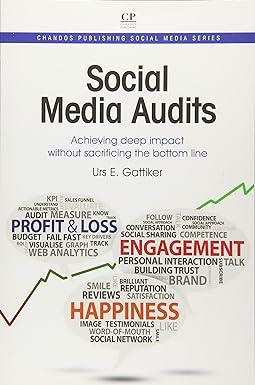Question
Chapter 10: Applying Excel For example, in cell D21 enter the formula = D6. Notes: In the text, variances are always displayed as positive numbers.
Chapter 10: Applying Excel
| |||||||||||||||||||||||||||||||||
| Data | |||||||||||||||||||||||||||||||||
| Exhibit 10-1: Standard Cost Card | |||||||||||||||||||||||||||||||||
| Inputs | Standard Quantity | Standard Price | |||||||||||||||||||||||||||||||
| Direct materials | 3.0 | pounds | $4.00 | per pound | |||||||||||||||||||||||||||||
| Direct labor | 0.50 | hours | $22.00 | per hour | |||||||||||||||||||||||||||||
| Variable manufacturing overhead | 0.50 | hours | $6.00 | per hour | |||||||||||||||||||||||||||||
| Actual results: | |||||||||||||||||||||||||||||||||
| Actual output | 2,000 | units | |||||||||||||||||||||||||||||||
| Actual variable manufacturing overhead cost | $7,140 | ||||||||||||||||||||||||||||||||
| Actual Quantity | Actual price | ||||||||||||||||||||||||||||||||
| Actual direct materials cost | 6,500 | pounds | $3.80 | per pound | |||||||||||||||||||||||||||||
| Actual direct labor cost | 1,050 | hours | $21.60 | per hour | |||||||||||||||||||||||||||||
| Enter a formula into each of the cells marked with a ? below | |||||||||||||||||||||||||||||||||
| Main Example: Chapter 10 | |||||||||||||||||||||||||||||||||
| Exhibit 10-4: Standard Cost Variance AnalysisDirect Materials | |||||||||||||||||||||||||||||||||
| Standard Quantity Allowed for the Actual Output, at Standard Price | ? | pounds | ? | per pound = | ? | ||||||||||||||||||||||||||||
| Actual Quantity of Input, at Standard Price | ? | pounds | ? | per pound = | ? | ||||||||||||||||||||||||||||
| Actual Quantity of Input, at Actual Price | ? | pounds | ? | per pound = | ? | ||||||||||||||||||||||||||||
| Direct materials variances: | |||||||||||||||||||||||||||||||||
| Materials quantity variance | ? | ||||||||||||||||||||||||||||||||
| Materials price variance | ? | ||||||||||||||||||||||||||||||||
| Materials spending variance | ? | ||||||||||||||||||||||||||||||||
| Exhibit 10-6: Standard Cost Variance AnalysisDirect Labor | |||||||||||||||||||||||||||||||||
| Standard Hours Allowed for the Actual Output, at Standard Rate | ? | hours | ? | per hour = | ? | ||||||||||||||||||||||||||||
| Actual Hours of Input, at Standard Rate | ? | hours | ? | per hour = | ? | ||||||||||||||||||||||||||||
| Actual Hours of Input, at Actual Rate | ? | hours | ? | per hour = | ? | ||||||||||||||||||||||||||||
| Direct labor variances: | |||||||||||||||||||||||||||||||||
| Labor efficiency variance | ? | ||||||||||||||||||||||||||||||||
| Labor rate variance | ? | ||||||||||||||||||||||||||||||||
| Labor spending variance | ? | ||||||||||||||||||||||||||||||||
| Exhibit 10-8: Standard Cost Variance AnalysisVariable Manufacturing Overhead | |||||||||||||||||||||||||||||||||
| Standard Hours Allowed for the Actual Output, at Standard Rate | ? | hours | ? | per hour = | ? | ||||||||||||||||||||||||||||
| Actual Hours of Input, at Standard Rate | ? | hours | ? | per hour = | ? | ||||||||||||||||||||||||||||
| Actual Hours of Input, at Actual Rate | ? | hours | ? | per hour = | ? | ||||||||||||||||||||||||||||
| Variable overhead variances: | |||||||||||||||||||||||||||||||||
| Variable overhead efficiency variance | ? | ||||||||||||||||||||||||||||||||
| Variable overhead rate variance Chapter 10: Applying Excel: Exercise (Part 2 of 2)
| ? | ||||||||||||||||||||||||||||||||
Step by Step Solution
There are 3 Steps involved in it
Step: 1

Get Instant Access to Expert-Tailored Solutions
See step-by-step solutions with expert insights and AI powered tools for academic success
Step: 2

Step: 3

Ace Your Homework with AI
Get the answers you need in no time with our AI-driven, step-by-step assistance
Get Started


